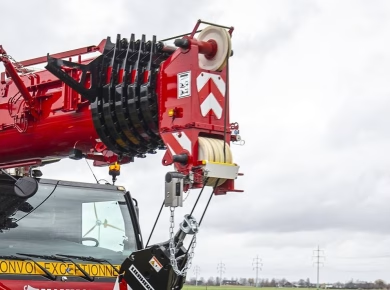The sound of a safety whistle piercing the air can sometimes feel like a signal for the end of fun rather than a call to action. Over the years, I’ve seen firsthand how safety days can often be perceived as a necessary evil—a box to tick rather than an opportunity for genuine engagement. To shift this narrative, it’s essential to create an environment where safety becomes a shared responsibility rather than a punitive obligation. The goal is to transform safety training into an engaging experience that resonates with everyone on the site, ensuring that the principles stick long after the day is over.
Understanding the Importance of Safety Days
Before diving into the nitty-gritty of how to make safety day enjoyable, it’s worth examining why these events are crucial in the first place. Safety days serve as a vital reminder of the risks inherent in construction and site management. They provide an opportunity to refresh knowledge, introduce new protocols, and strengthen the safety culture within your team. However, to maximize their effectiveness, it’s essential to approach them with a fresh perspective that emphasizes engagement over obligation.
Building a Culture of Safety
Creating a culture of safety starts long before the designated safety day. It’s about embedding safety into the fabric of the organization. Leaders should model safety behaviors consistently, showcasing their commitment not just on special occasions, but every day. When team members see management prioritizing safety, they’re more likely to embrace it themselves.
Engaging workers in discussions about safety, encouraging them to share their experiences and concerns, can establish an open line of communication. This not only builds trust but also empowers employees to take ownership of their safety and that of their colleagues. A culture that values safety fosters a sense of community, making safety day feel less like a chore and more like a collaborative effort.
Making Safety Day Engaging
The key to a successful safety day lies in how it’s structured. Instead of a lecture-heavy format, incorporate interactive elements that promote participation.
Interactive Workshops
Consider hosting workshops that allow employees to engage with safety protocols hands-on. For instance, instead of simply discussing the proper use of personal protective equipment (PPE), set up stations where workers can practice wearing different gear. This experiential learning approach not only makes the information more memorable but also provides an opportunity for peer-to-peer learning.
Safety Games and Challenges
Infusing an element of fun can significantly enhance participation. Organize safety-themed games, like a scavenger hunt for safety equipment or a quiz competition with small prizes. These activities can break the ice and encourage camaraderie among team members. When employees associate safety with positive experiences, they are more likely to internalize the lessons.
Incorporating Real-World Scenarios
One of the most effective ways to convey the importance of safety is by relating it to real-world scenarios. Sharing stories of near misses or accidents—without compromising any confidentiality or respect for those involved—can drive home the seriousness of safety protocols.
Case Studies
Presenting case studies from the industry can illustrate the potential consequences of neglecting safety measures. Discussing what went wrong and how similar incidents could be avoided in the future not only informs but also resonates emotionally with your team. It humanizes the data and reminds everyone why they need to stay vigilant.
Encouraging Feedback and Continuous Improvement
Safety days shouldn’t be a one-off event. Gathering feedback from participants can provide insights into what worked and what didn’t, allowing for continuous improvement.
Post-Event Surveys
Circulate surveys after the event to gauge participants’ engagement and understanding. Ask open-ended questions to encourage thoughtful responses. Did they find the sessions valuable? What topics would they like to explore in the future? This feedback loop is essential for creating a responsive safety culture.
Actionable Takeaways
At the end of the day, provide each participant with actionable takeaways—checklists, reminders, or even fun safety-themed merchandise. This reinforces what they learned and serves as a tangible reminder of their commitment to safety.
Celebrating Success and Acknowledging Contributions
Recognizing and celebrating safety achievements can significantly enhance morale. Highlight individuals or teams who have exemplified commitment to safety throughout the year.
Safety Awards
Consider implementing a safety award system. Whether it’s a monthly recognition or an annual celebration, acknowledging the efforts of those who prioritize safety can motivate others to follow suit. This not only reinforces the importance of safety but also builds a sense of pride within the team.
Conclusion: Shaping a Future of Safety
Transforming safety day into an engaging and valuable experience requires intentional planning and a commitment to fostering a culture of safety. By incorporating interactive elements, real-world scenarios, and continuous feedback, we can shift perceptions of safety training from punishment to a proactive and engaging practice. Ultimately, when safety becomes a shared responsibility, it cultivates an environment where everyone feels empowered to contribute to a safer workplace. As we look to the future, let’s strive to make every safety day a celebration of our collective commitment to protecting one another.


